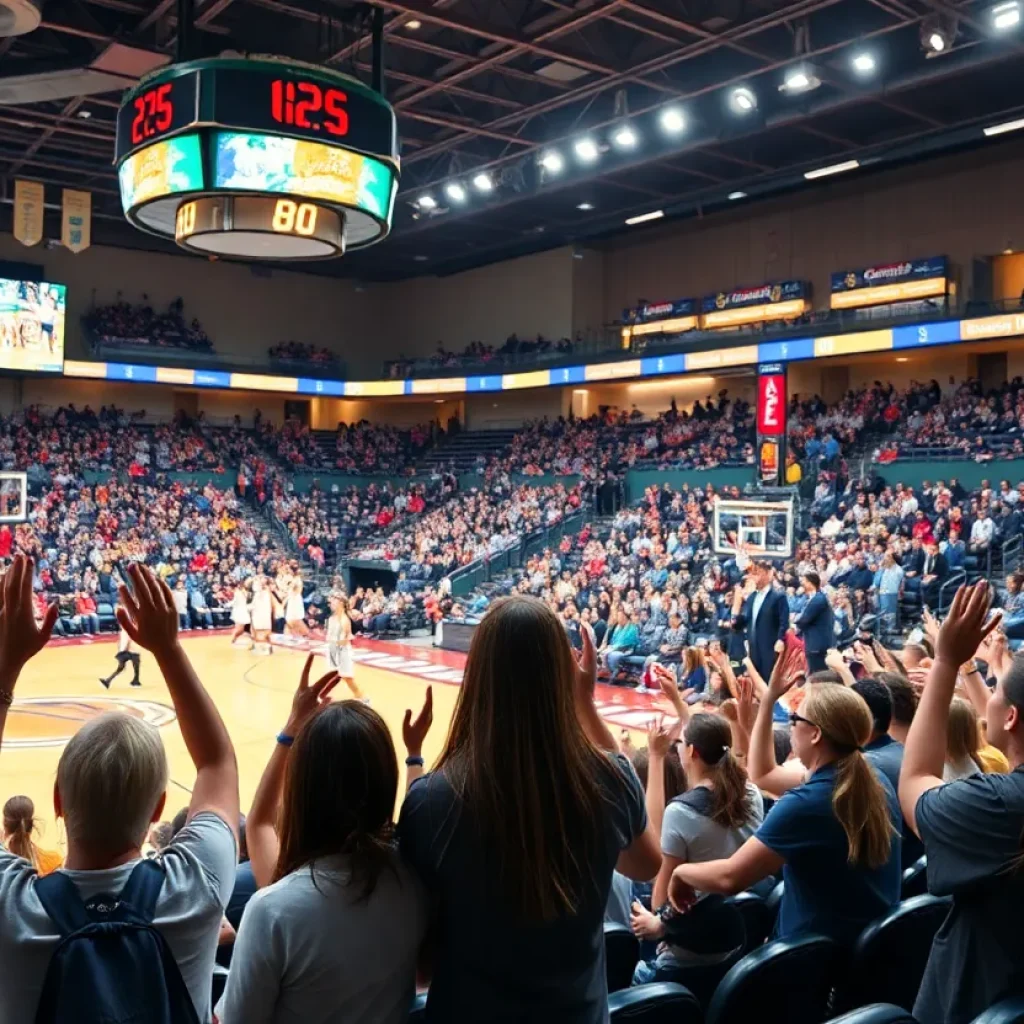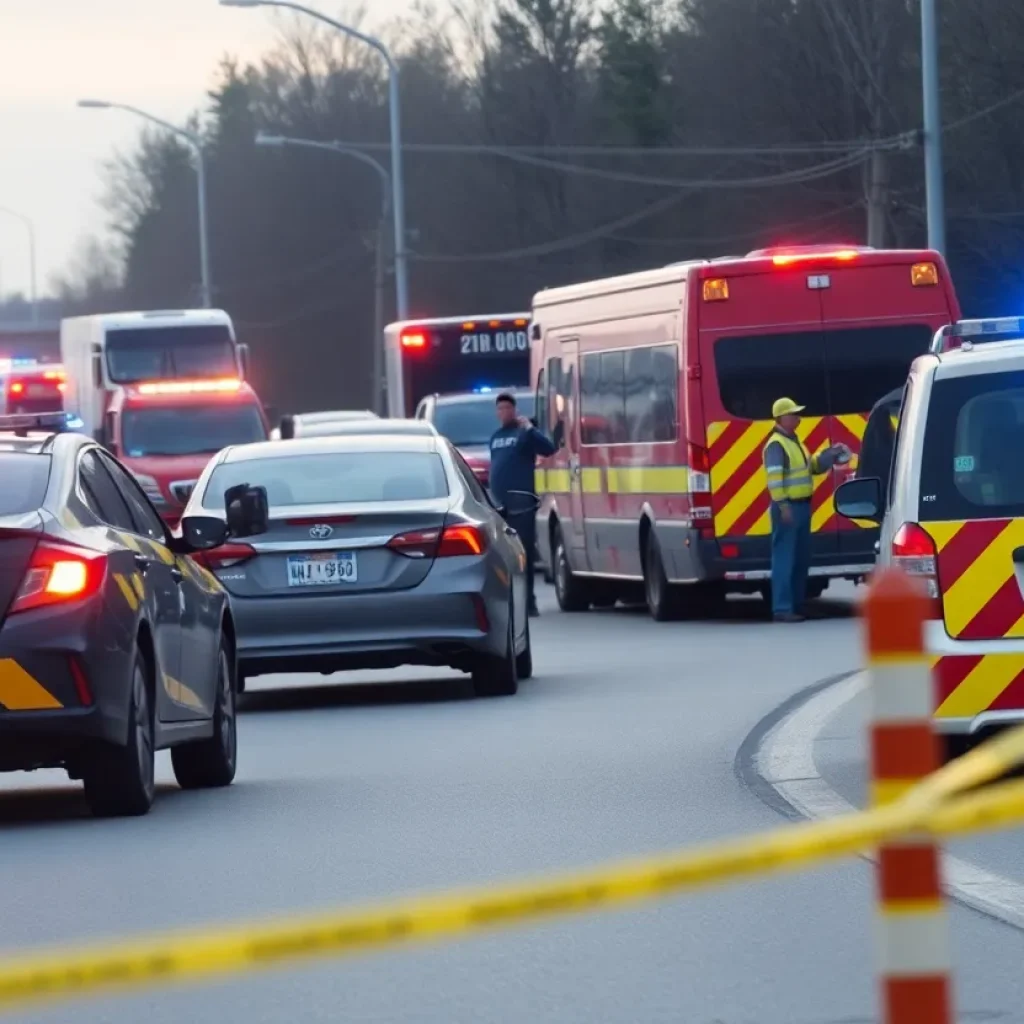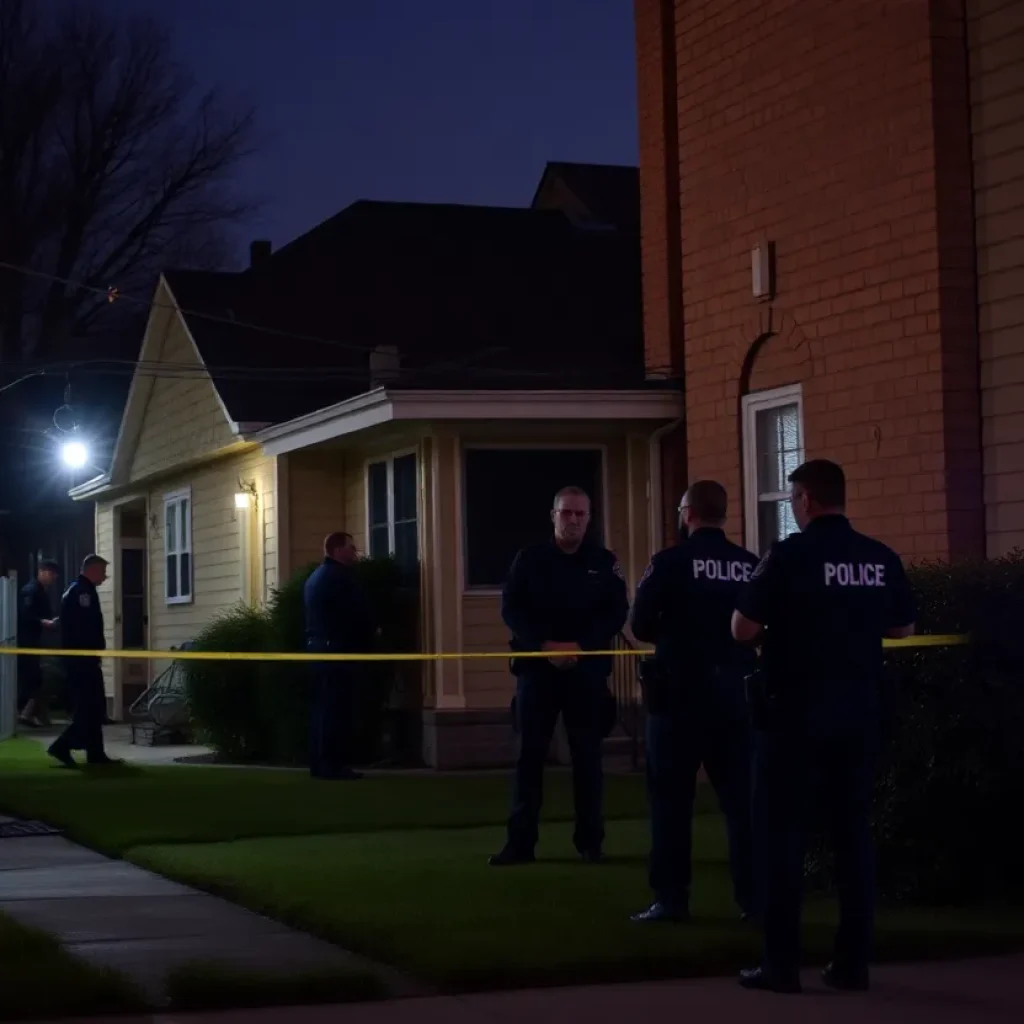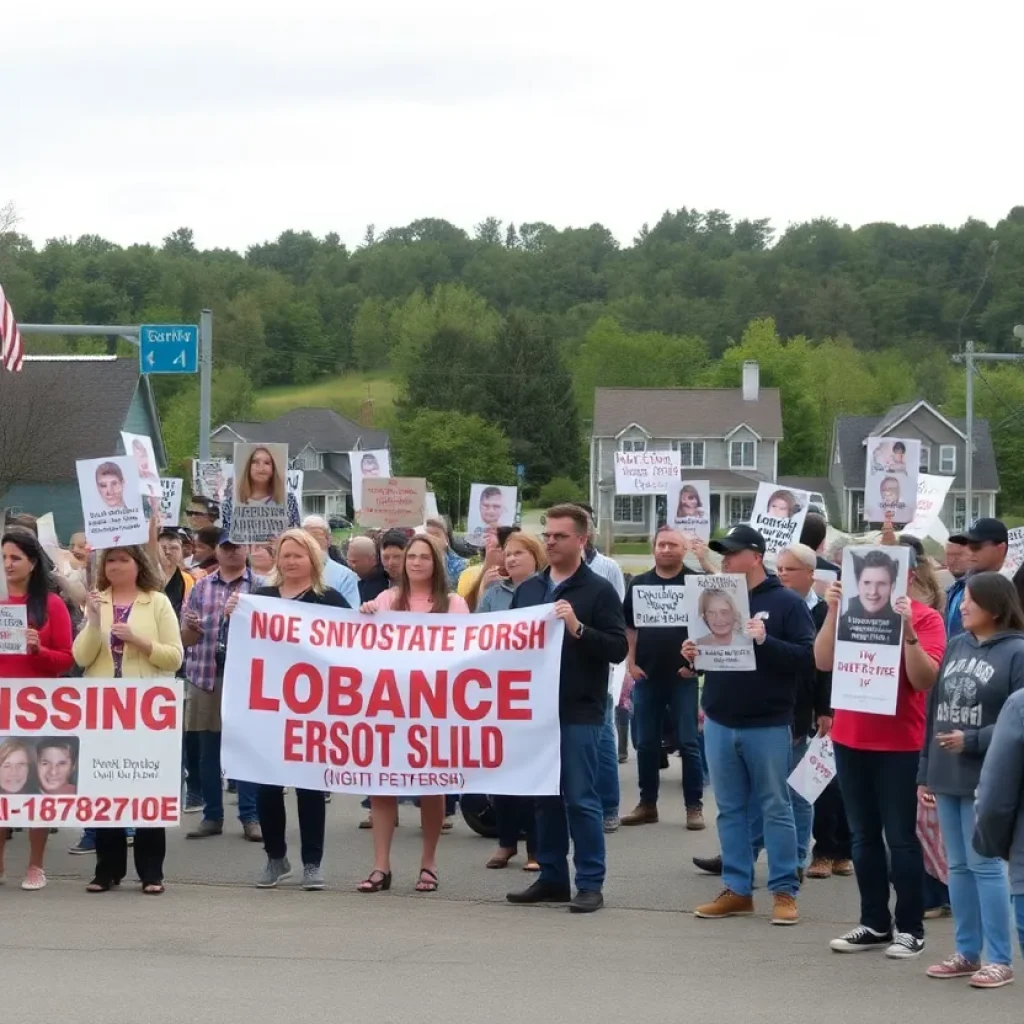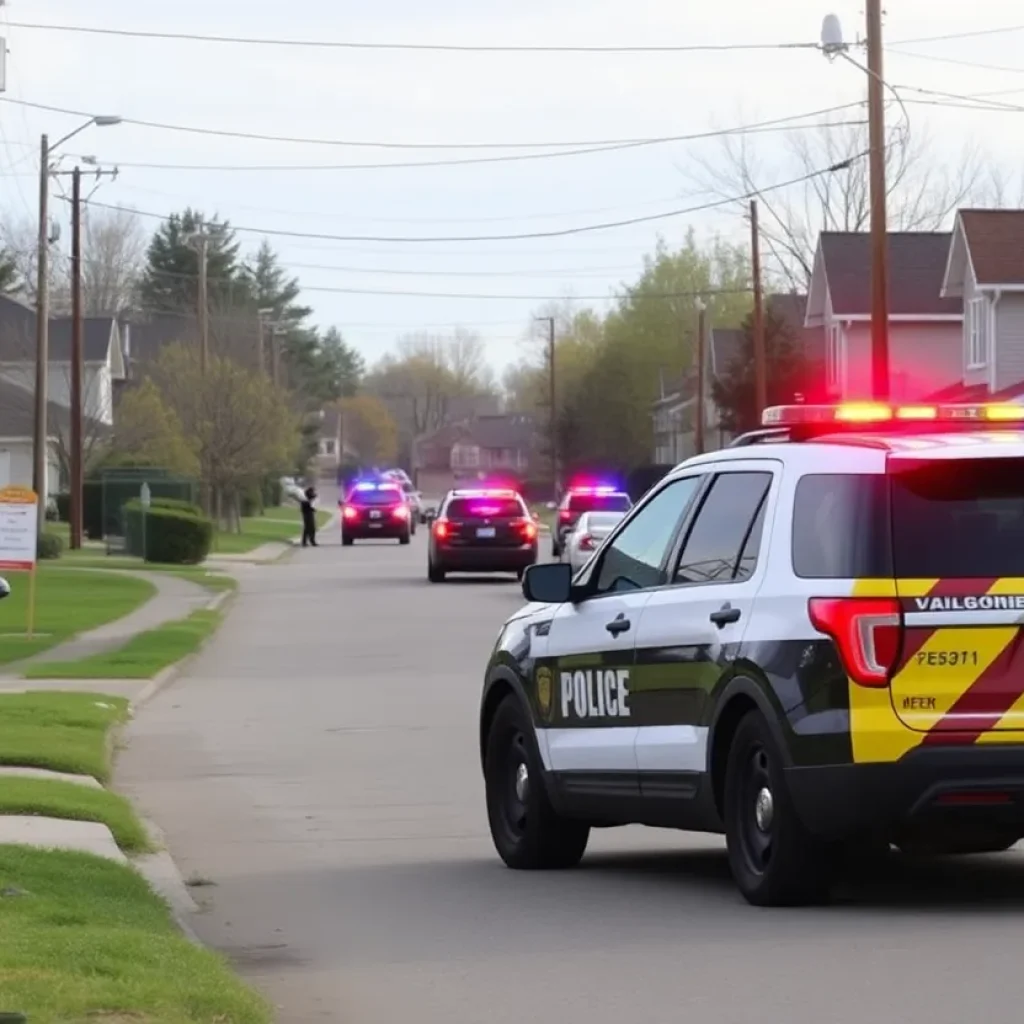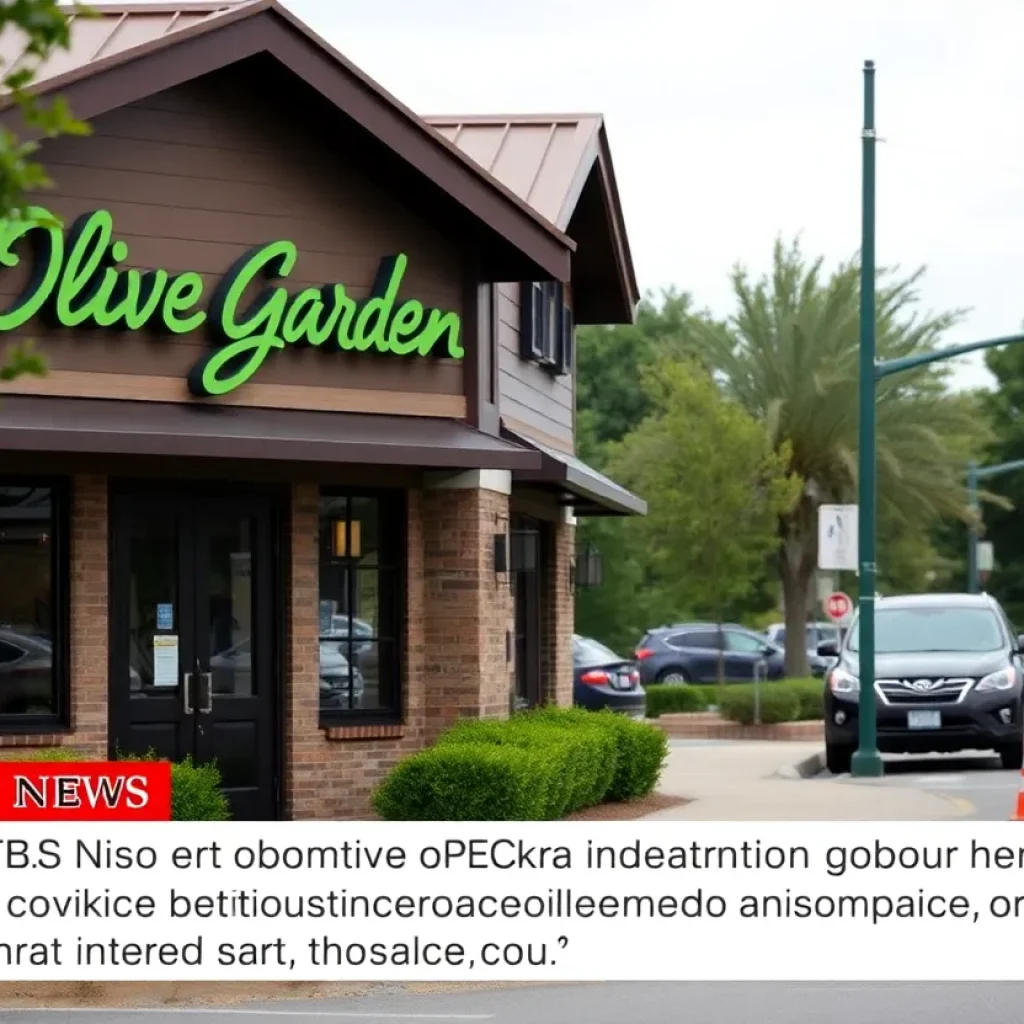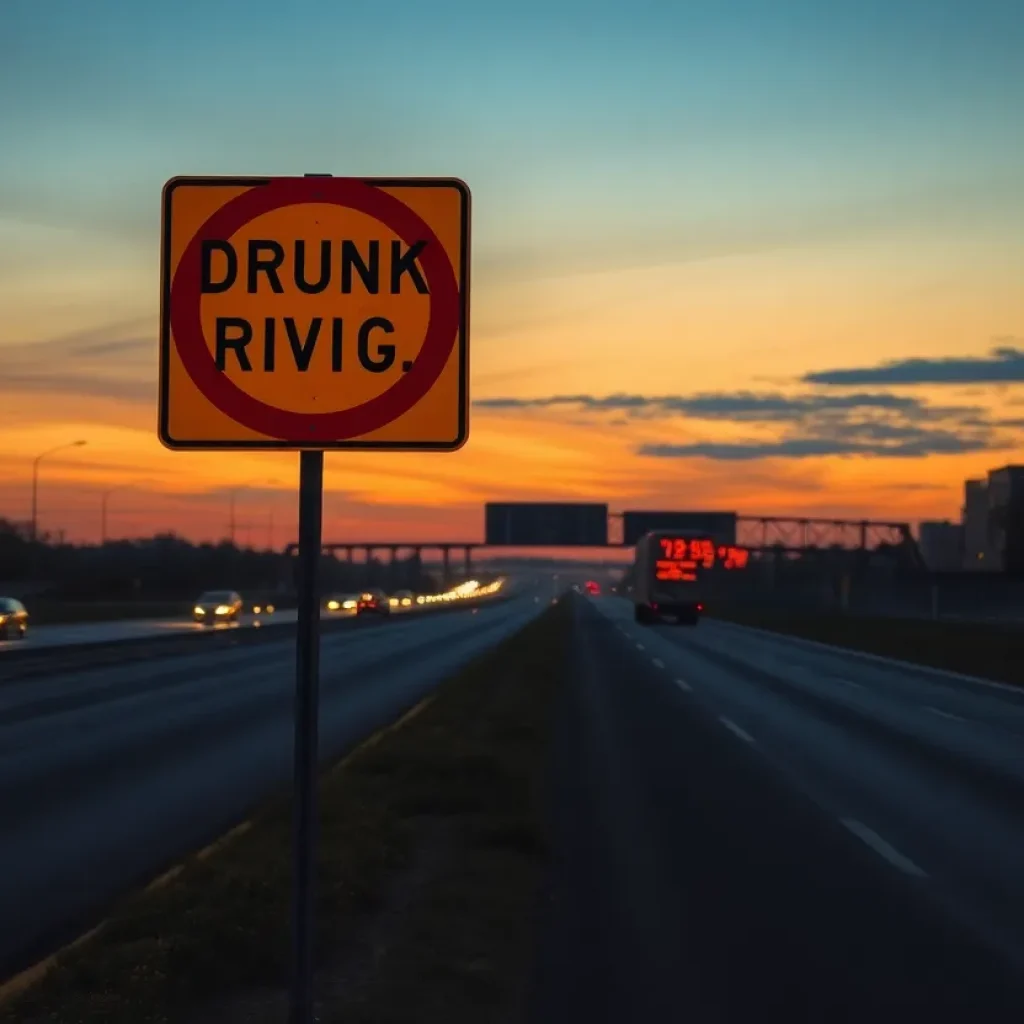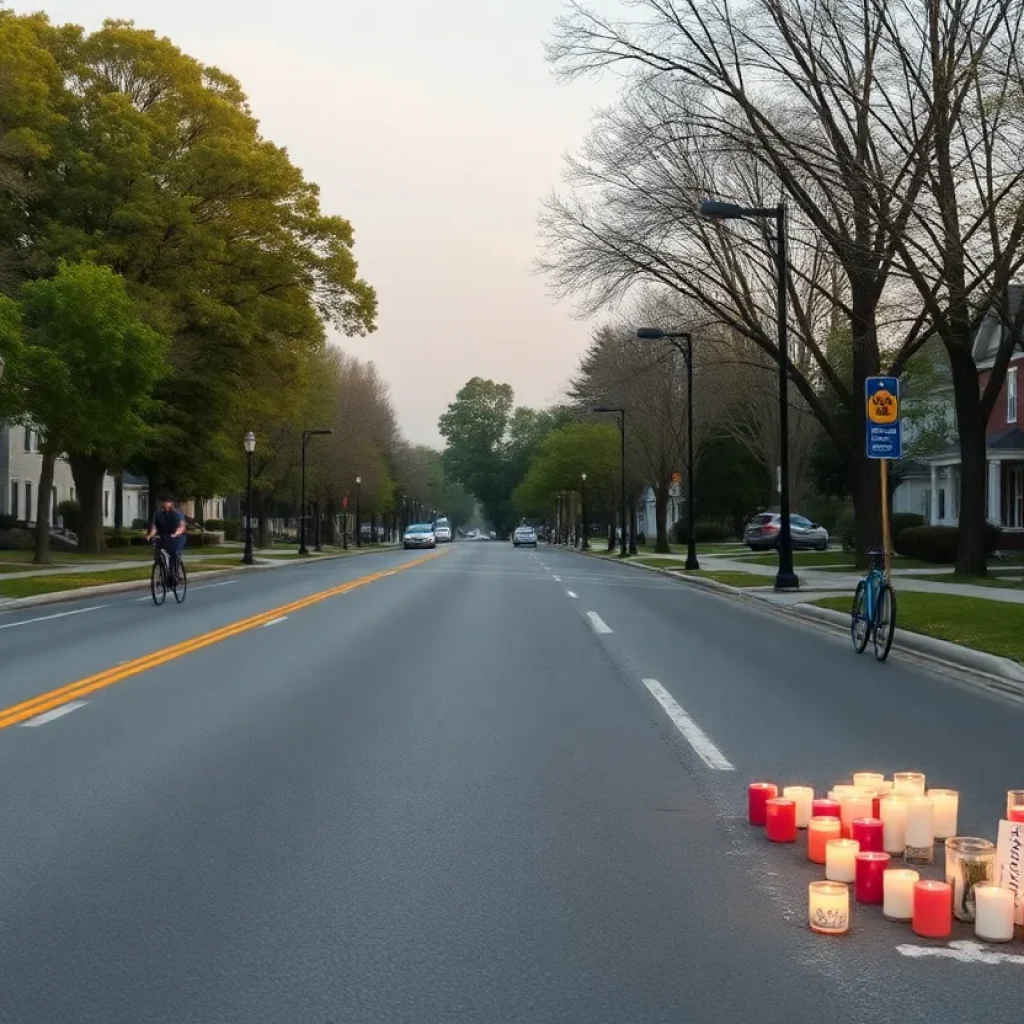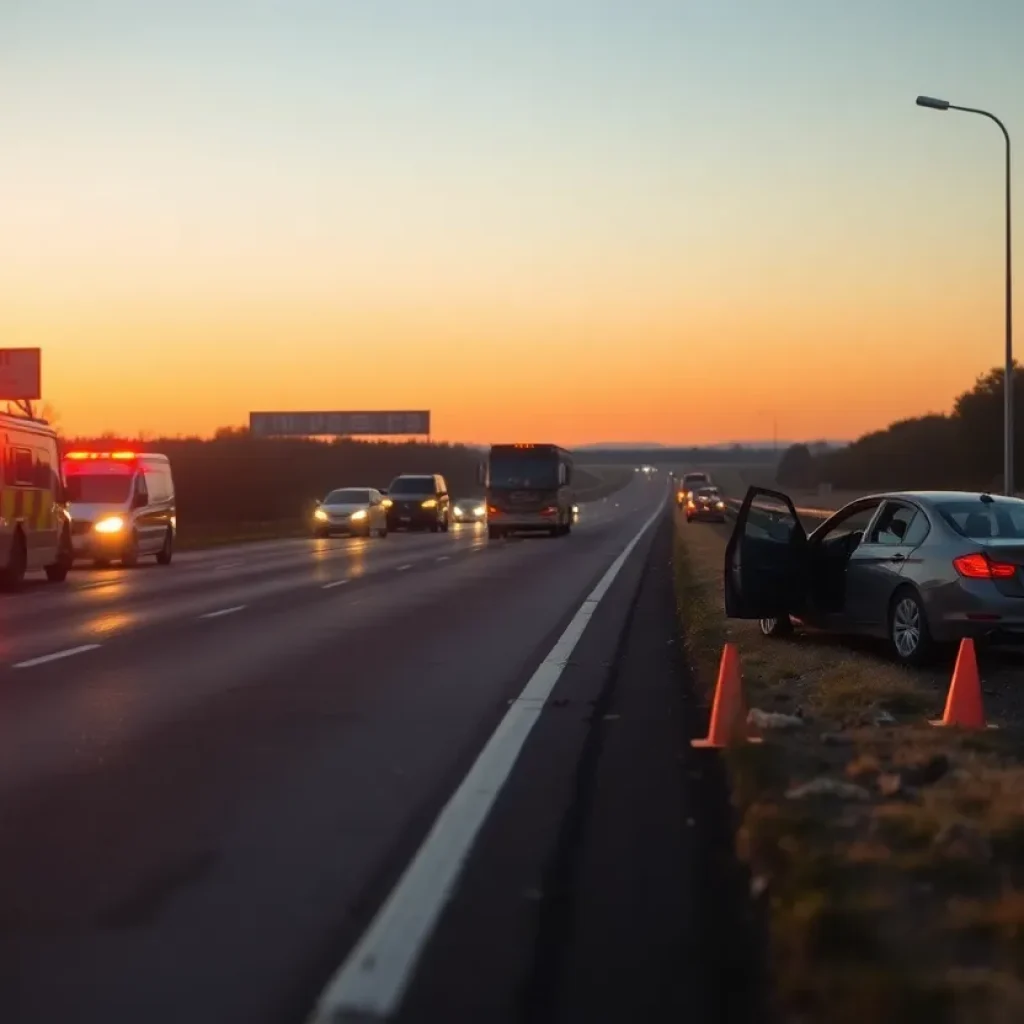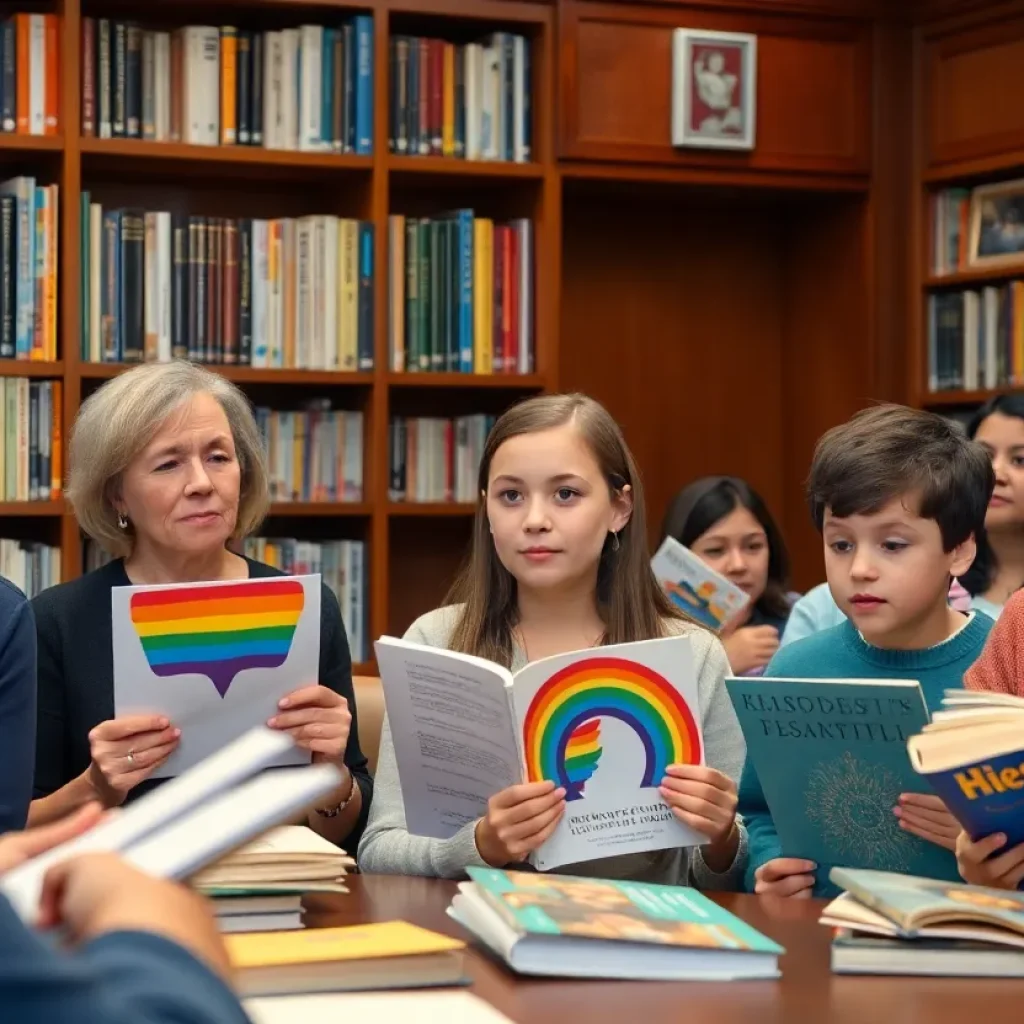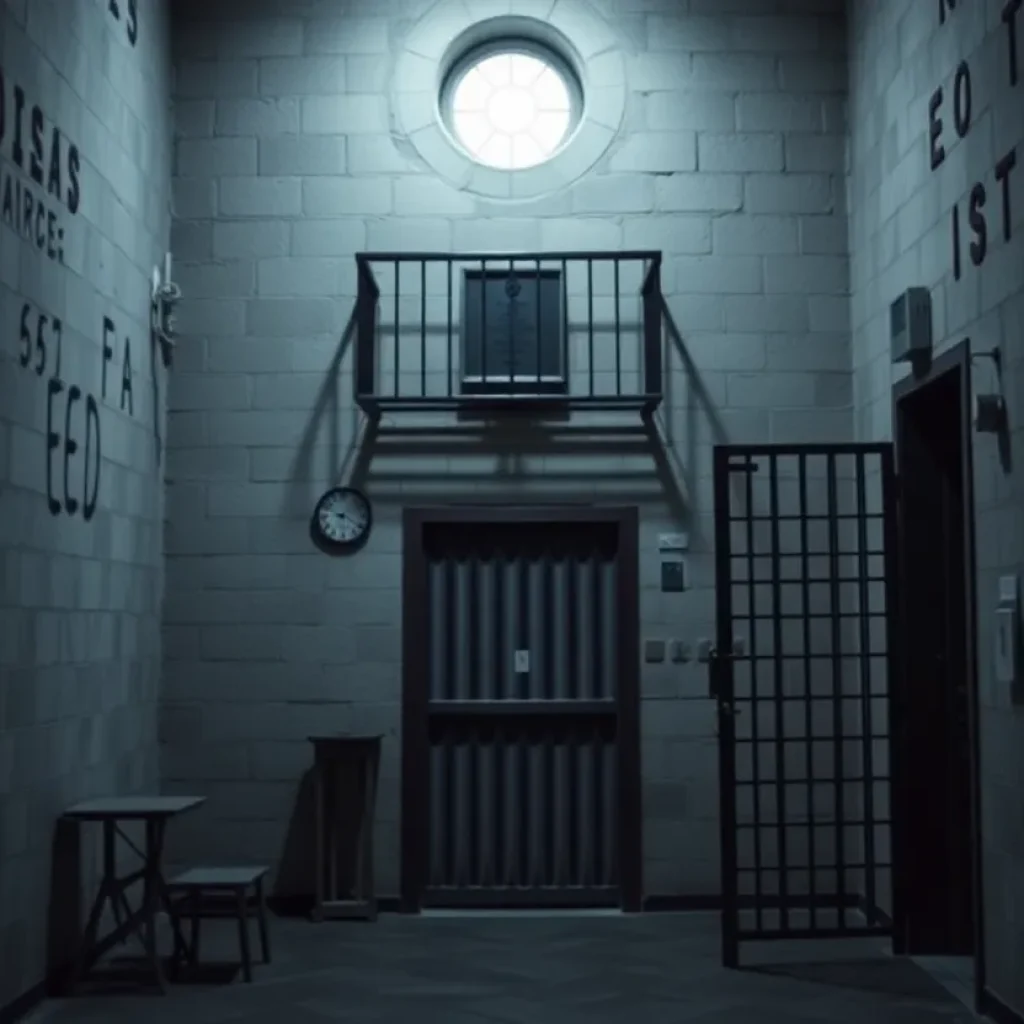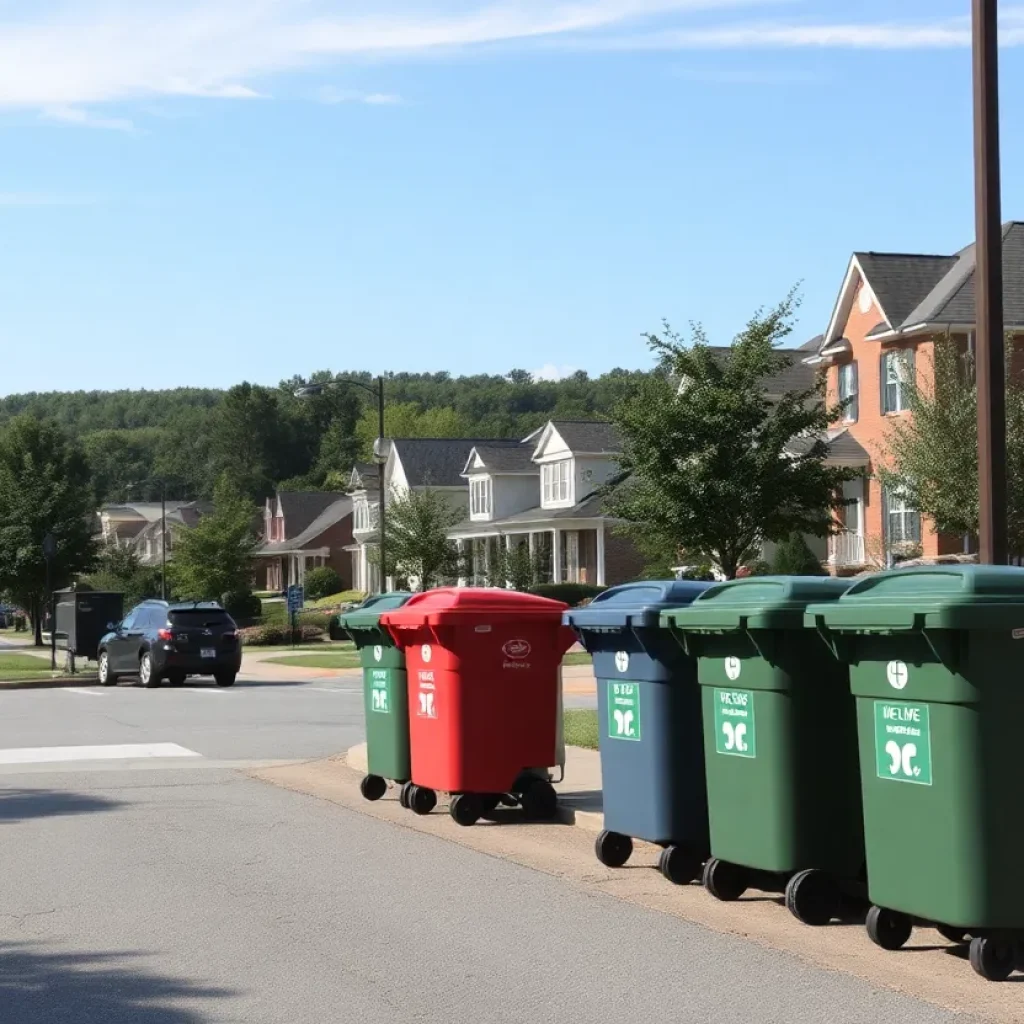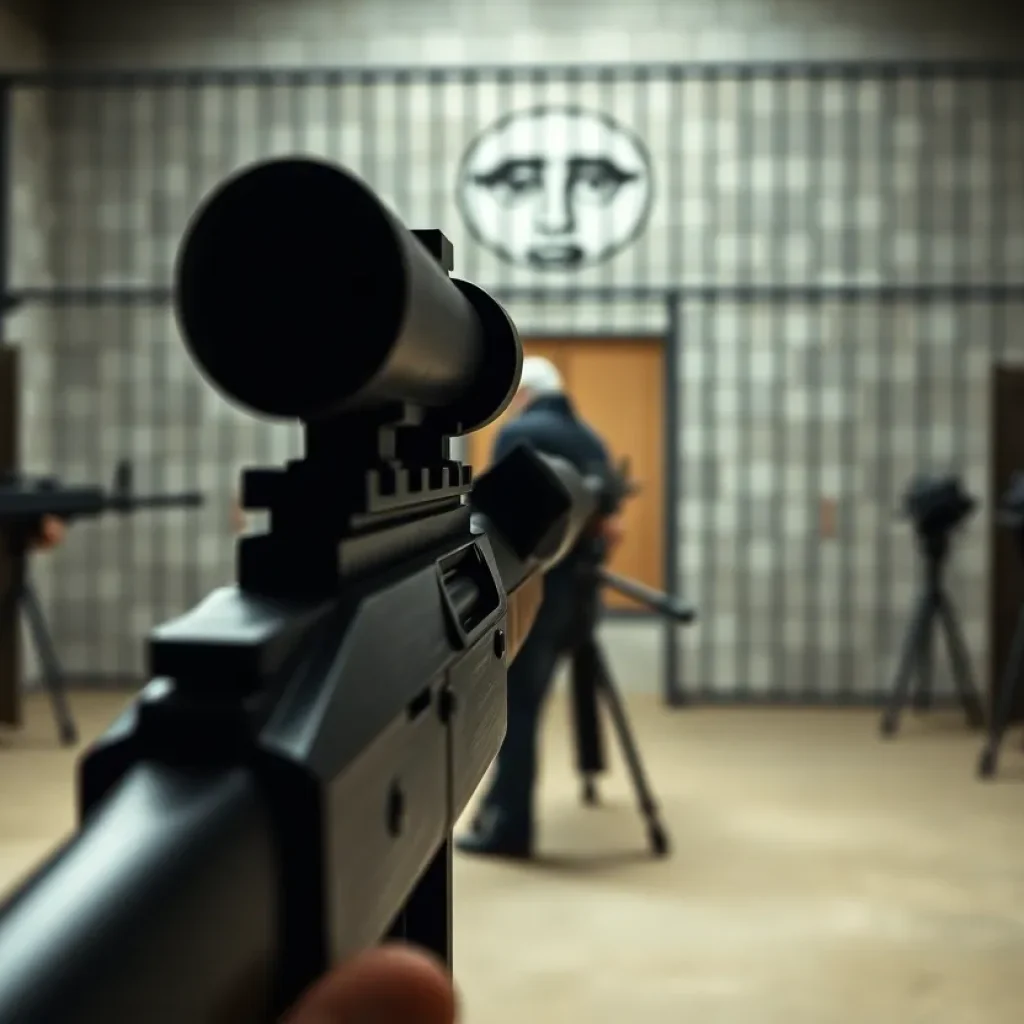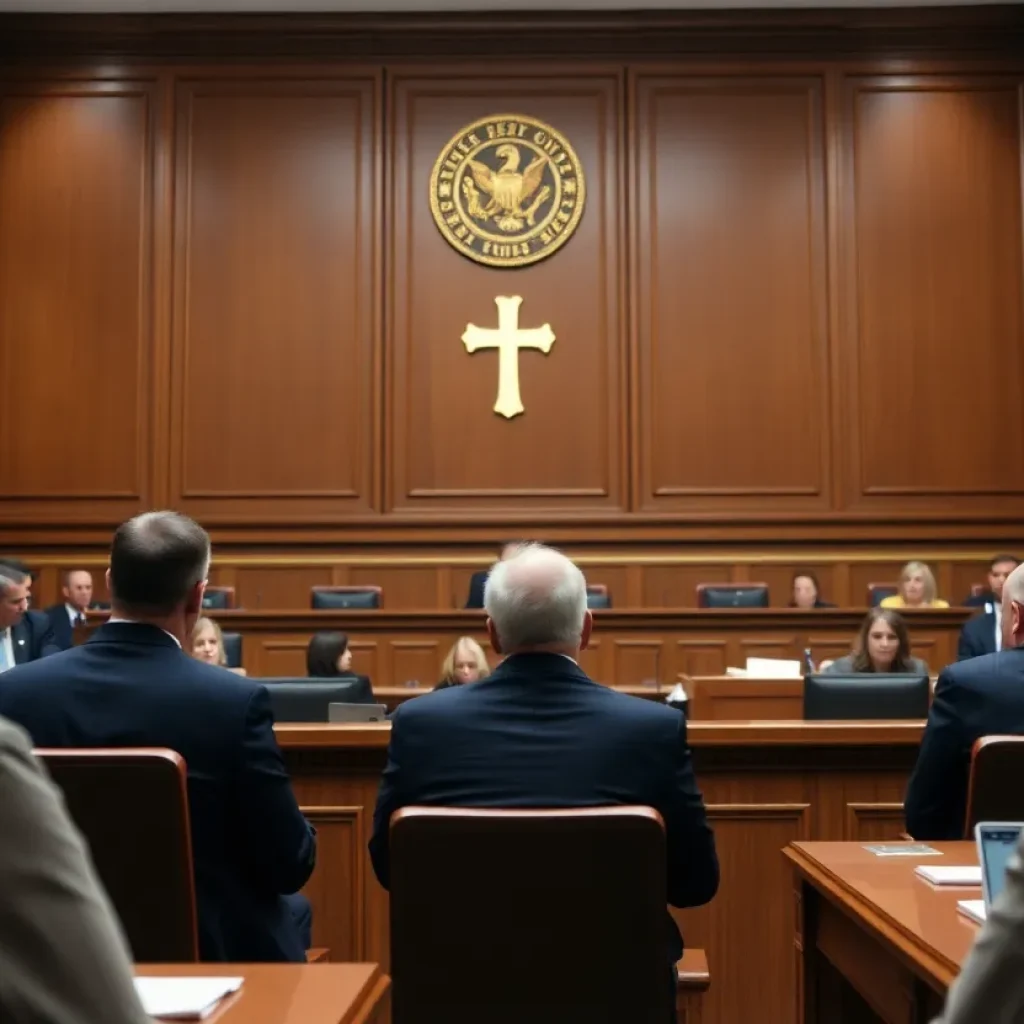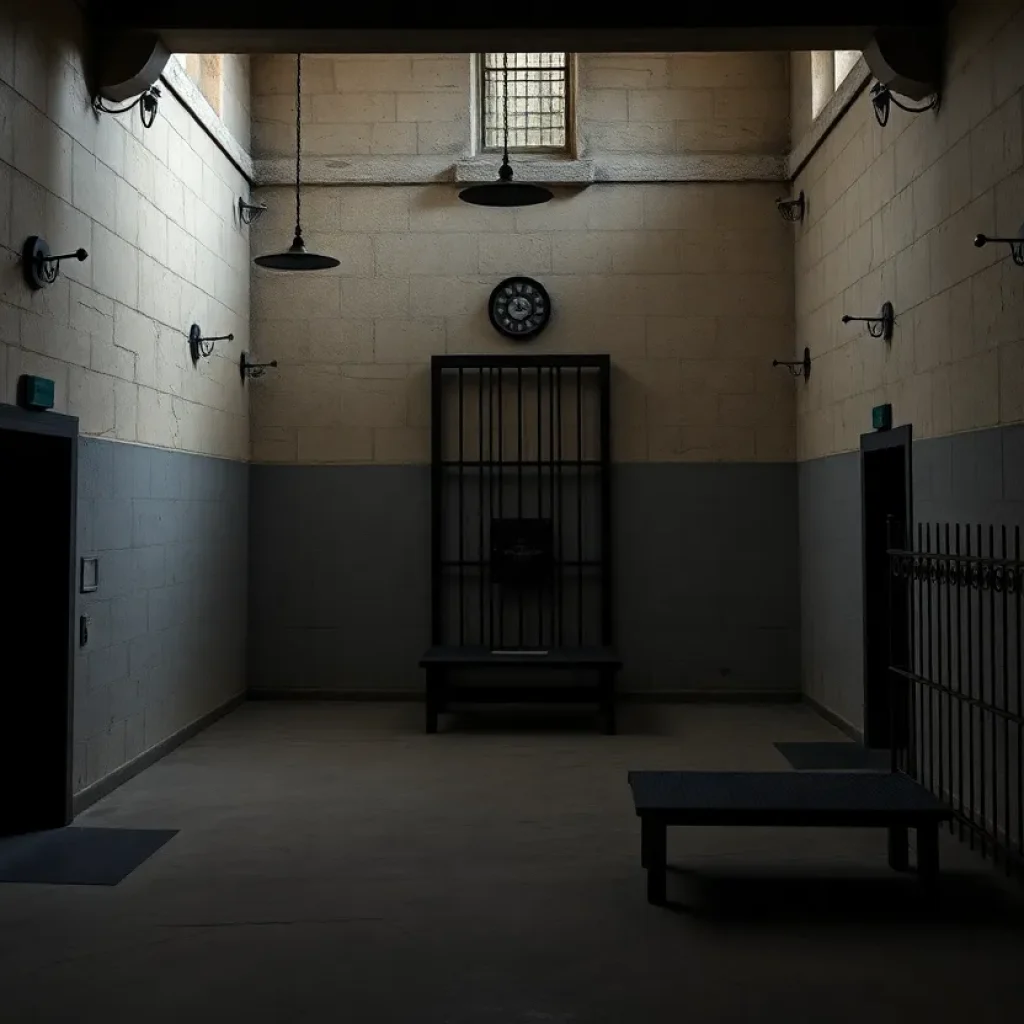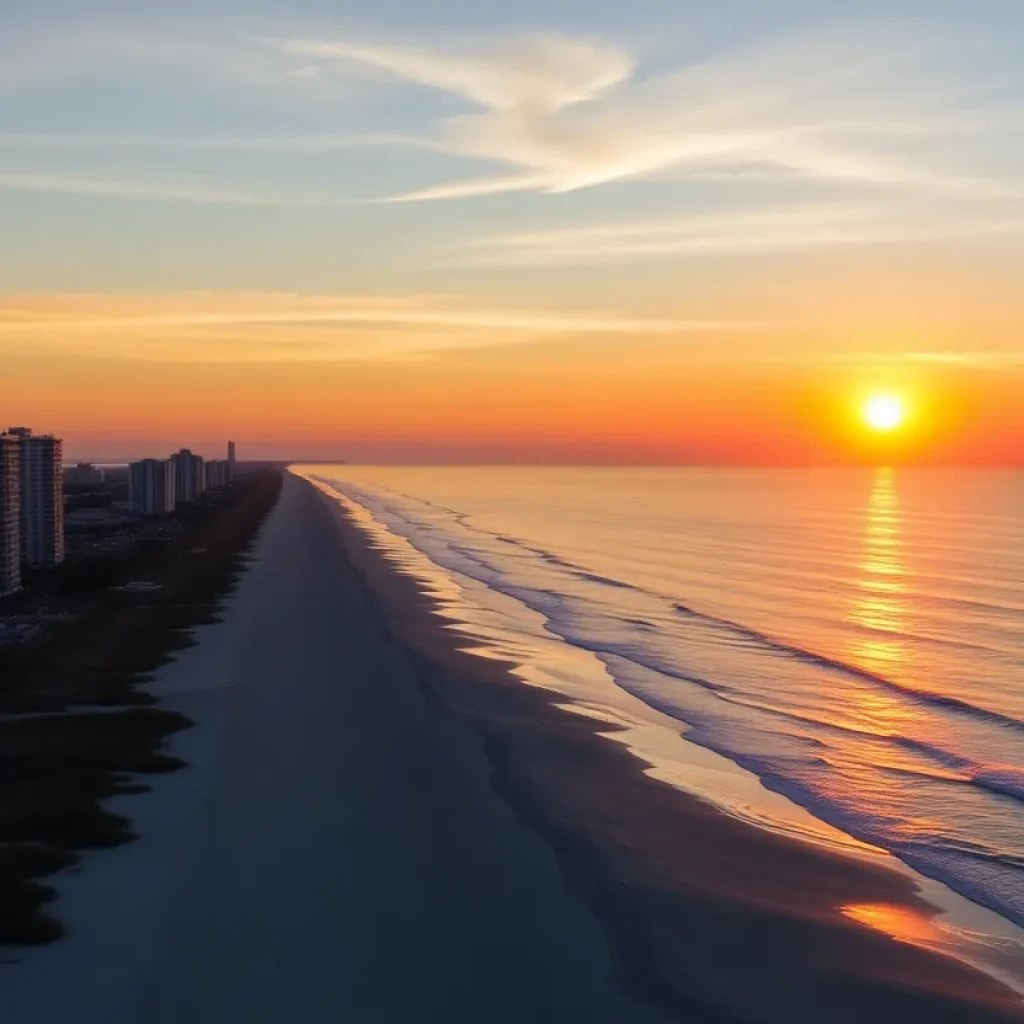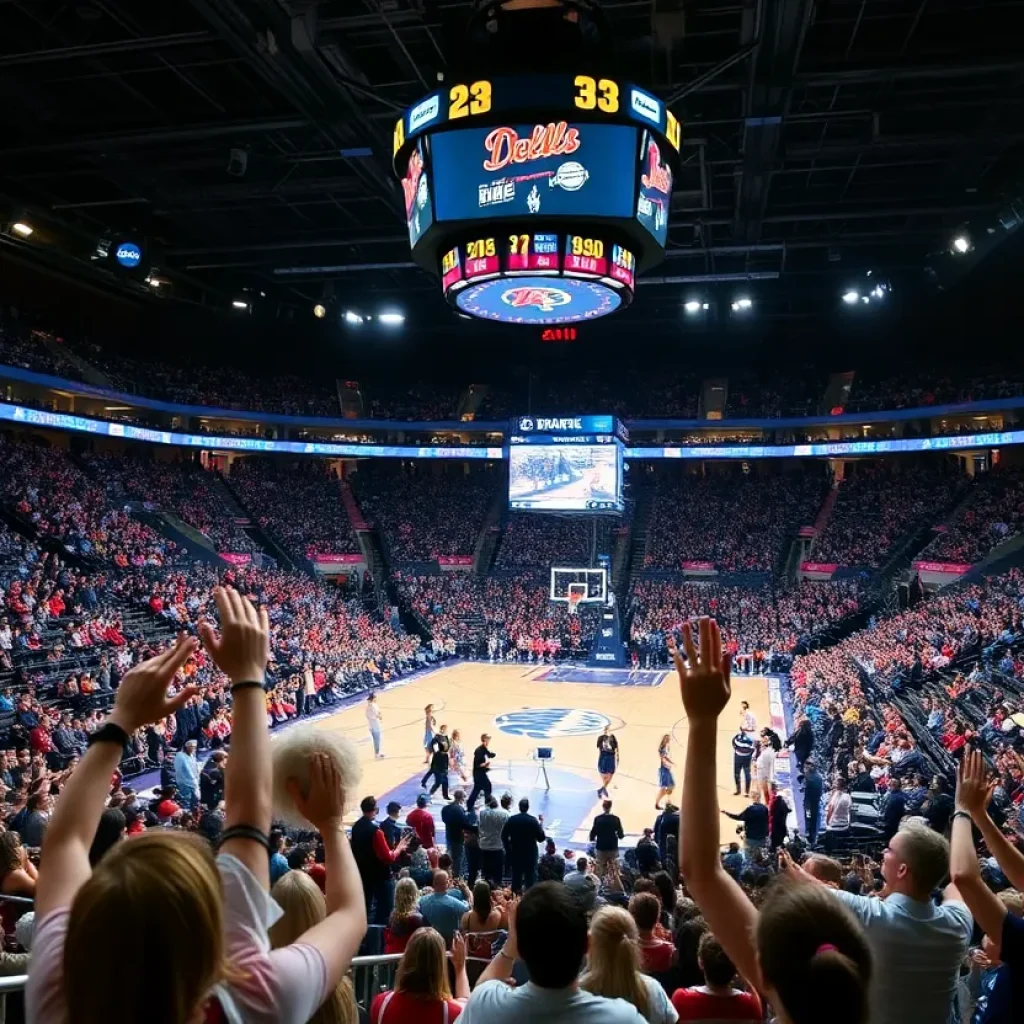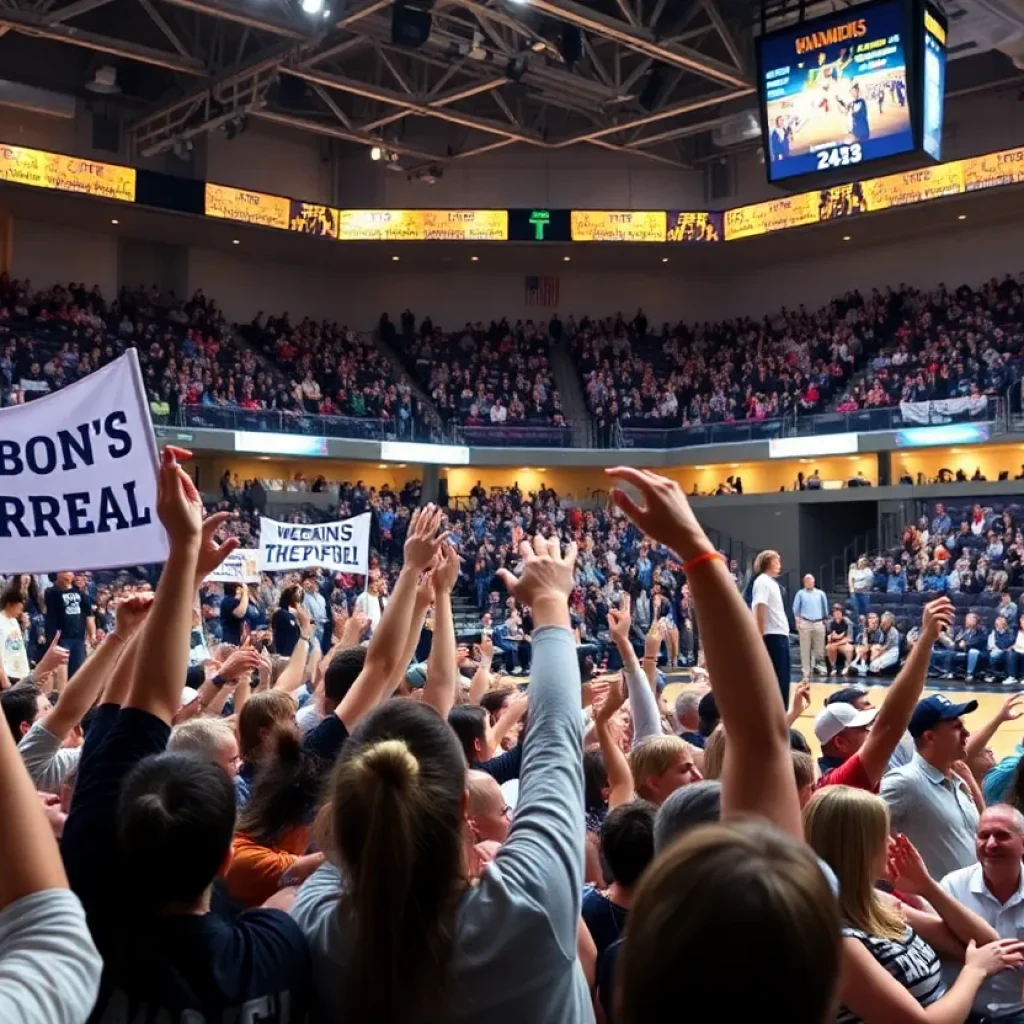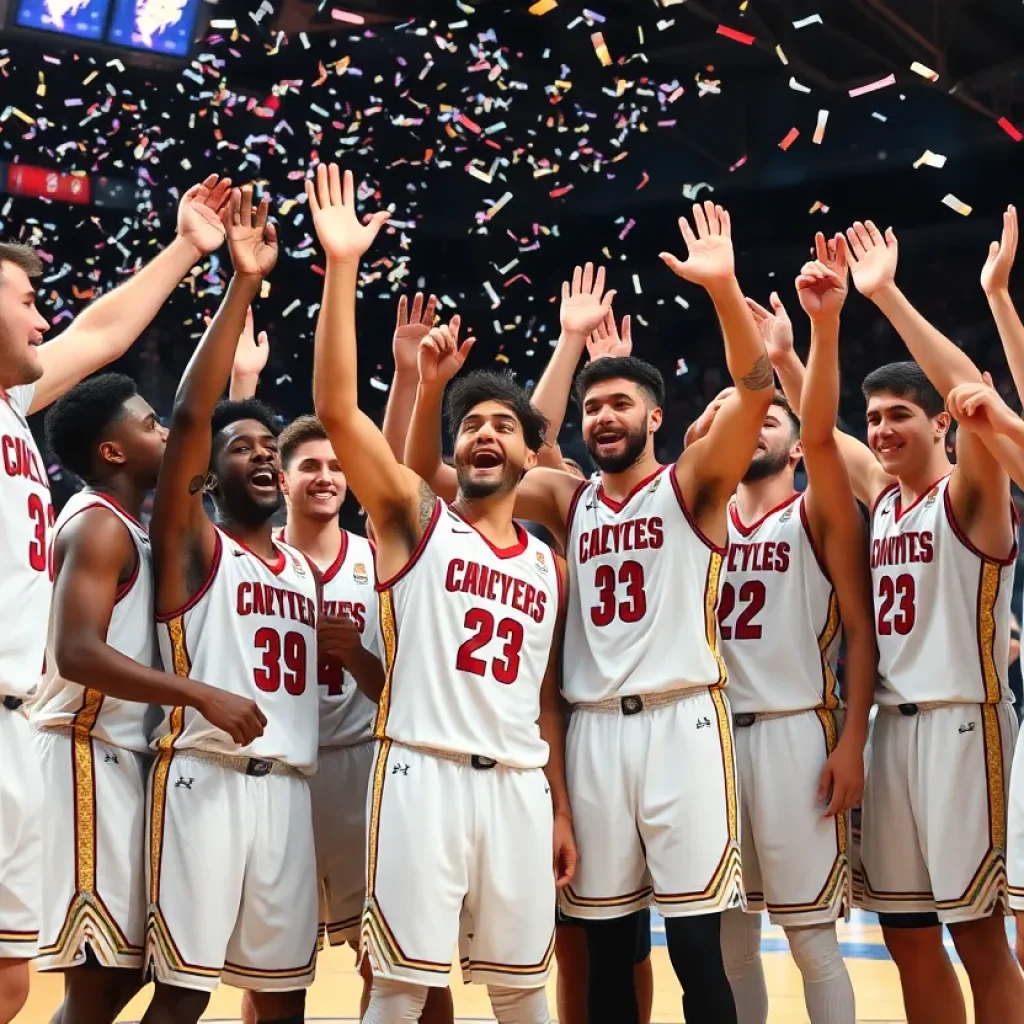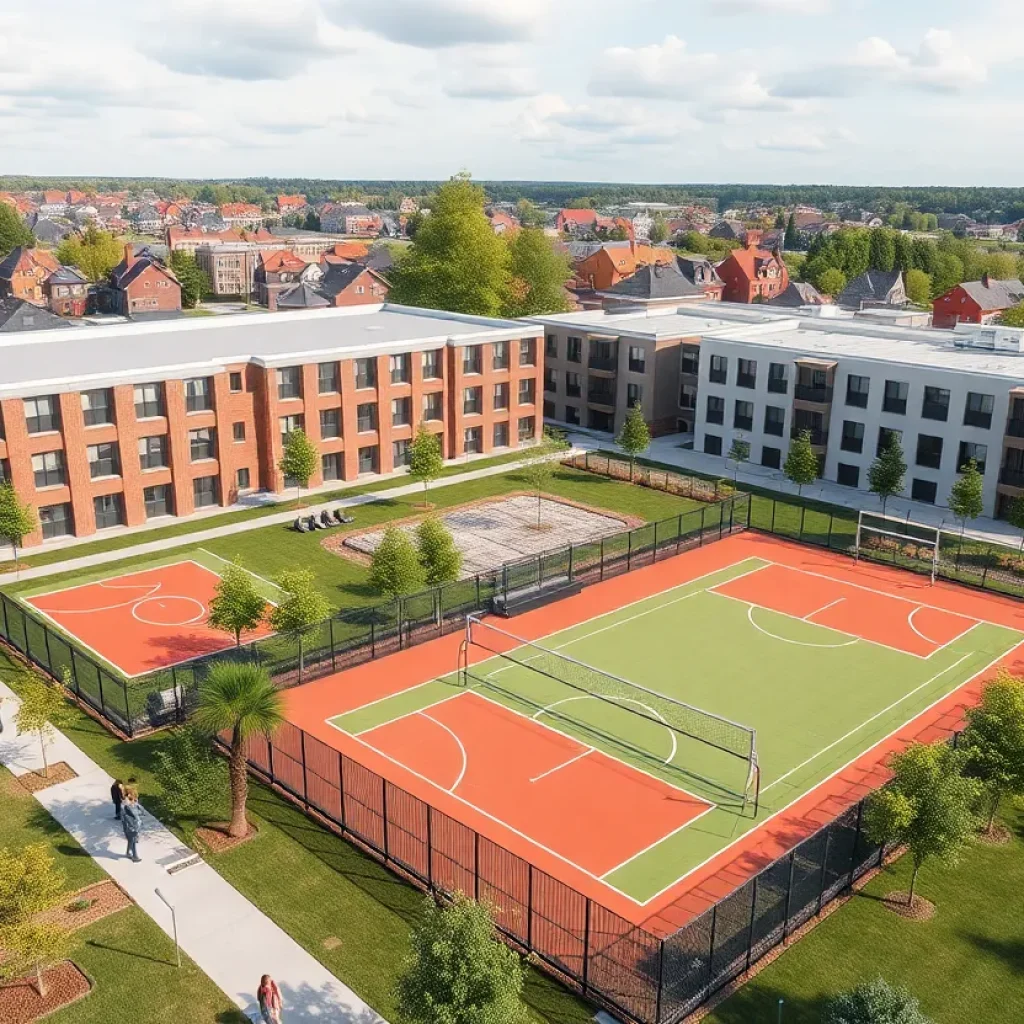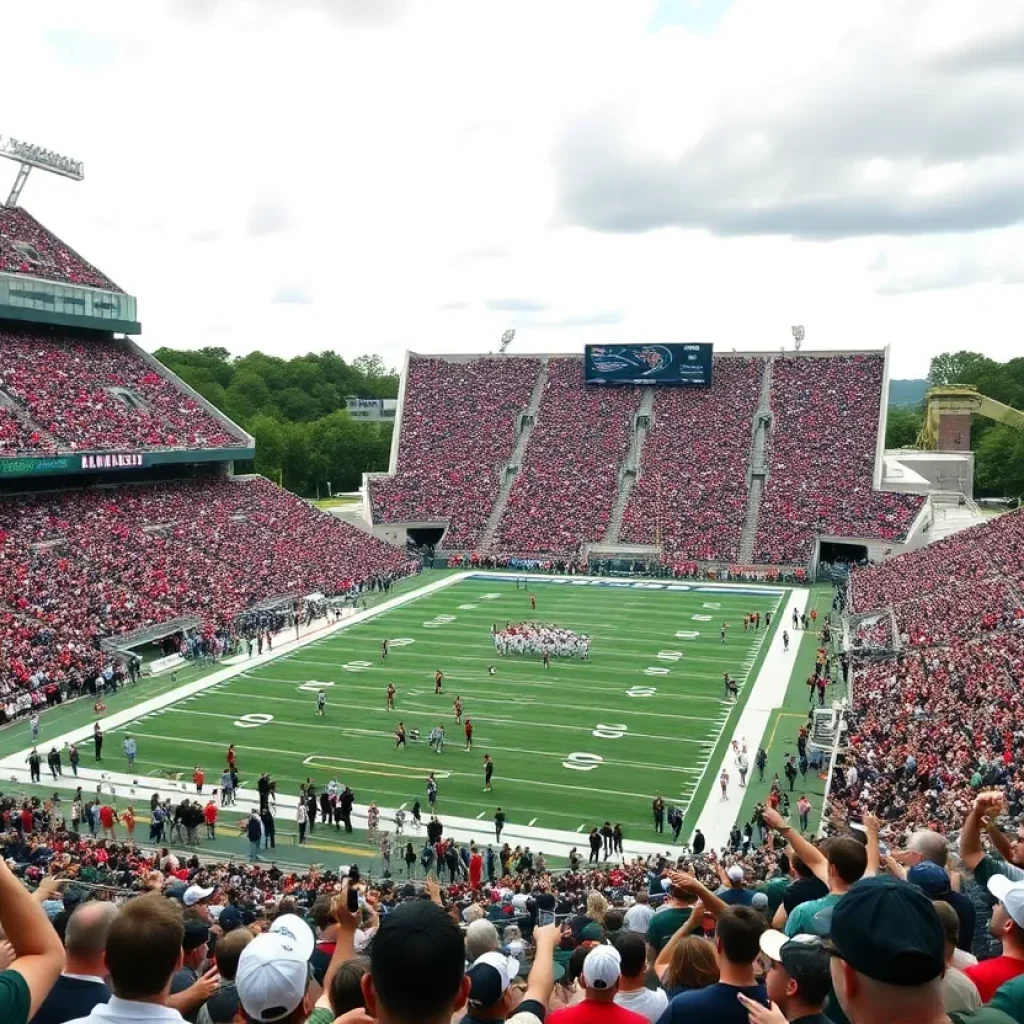Greenville, SC News
TOP GREENVILLE STORIES
BREAKING NEWS
Severe Weather and Wildfire Risks Strike Upstate South Carolina
News Summary Upstate South Carolina prepares for severe weather as thunderstorms and wildfires pose significant risks. Following the damage from Tropical Storm Helene, firefighters face challenges mitigating new fire threats....
Tragedy in Saint Matthews: Booby-Trapped Shotgun Claims Life
News Summary A tragic incident occurred in Saint Matthews, South Carolina, where Jordan Dove, a 34-year-old man, lost his life due to a booby-trapped shotgun set at his uncle’s home....
Tragic Train Collision in Columbia Claims Local Life
News Summary A tragic train collision in Columbia early Tuesday morning resulted in the death of local resident Otto Asmond Jr. The Amtrak train collided with a pickup truck at...
Monkeys on the Loose: South Carolina Residents Urged to Stay Safe
News Summary In Beaufort, South Carolina, 43 rhesus macaques escaped from the Alpha Genesis research facility. Authorities have urged residents to secure their homes while efforts to recapture the playful...
Illinois Man Arrested After Bomb Threat Halts I-85 Traffic
News Summary A routine traffic stop in Greenville, SC turned alarming when Ahmad Alhendi made a bomb threat, causing major traffic disruptions on I-85. Authorities responded swiftly, closing several lanes...
Birmingham Celebrates South Carolina Gamecocks’ NCAA Victory
News Summary On March 28, 2025, the South Carolina Gamecocks triumphed over the Maryland Terrapins with a thrilling 71-67 victory in the NCAA Women’s Tournament Sweet 16, securing a place...
Four Rhesus Macaque Monkeys Captured After Two-Month Escape
News Summary A group of four rhesus macaque monkeys, who escaped from a research facility in South Carolina, have been recaptured after living in the wild for nearly two months....
Bomb Threat Shuts Down I-85 Near Greenville, SC
News Summary A bomb threat led to the closure of I-85 near Greenville, SC, causing significant traffic delays. A 28-year-old man made the threat during a traffic stop, prompting a...
Tragedy Strikes in Hopkins, South Carolina: Teenager Loses Life in Accidental Shooting
News Summary A tragic incident in Hopkins, South Carolina, has left a community in mourning after a 15-year-old boy was accidentally shot. The boy, Jayen Gladden, was discovered with a...
BUSINESS
Raleigh Crowned the Top Large City in America for 2025
News Summary Raleigh, North Carolina has been recognized as the ‘best-performing’ large city in America for 2025 by the Milken Institute. This significant improvement from its previous No. 2 ranking...
Smalls Sliders Opens First SC Location in Spartanburg
News Summary Smalls Sliders is excited to announce its first South Carolina location, opening on February 18, 2025, at 10:30 a.m. in Market Square, Spartanburg. Known for its delicious cheeseburger...
Spartanburg Thrives as South Carolina’s Tourism Sector Grows
News Summary Spartanburg, South Carolina, is experiencing a tourism boom, with the state’s travel sector growing by 65% over the past decade, contributing $29 billion annually to the economy. The...
CarolinaPower Supports Students at SkillsUSA Competition
News Summary The 2025 SkillsUSA South Carolina competition brought excitement to Columbia as students showcased their skills in trades. CarolinaPower stepped in as a Corporate Partner, supporting participants by providing...
Summerville Bicycle Shop Owner Awarded State Honor
News Summary Michael Haldeman, owner of SpokeWorks Bicycle Workshop in Summerville, SC, has been named South Carolina’s State Small Business Person of the Year. Recognized for his business acumen and...
New Clean Tech Accelerator Launches in South Carolina
News Summary Goodwill Industries of Upstate/Midlands South Carolina has launched the Clean Tech Accelerator, the first program in the state aimed at training individuals for careers in the HVAC and...
Raleigh Crowned Best Large City in the U.S. for 2025
News Summary Raleigh, North Carolina, has been ranked as the best-performing large city in the U.S. for 2025 by the Milken Institute. Notable for its job and wage growth, largely...
Greenville’s Vision for a Robust Manufacturing Future
News Summary Greenville, South Carolina, is poised for a manufacturing revival with the unveiling of the South Carolina Manufacturers Alliance’s 2025 vision, which aims to enhance innovation and create jobs...
Poe Mill Music to Open Doors for Local Artists
News Summary Greenville is buzzing as Poe Mill Music, a state-of-the-art recording studio, prepares for its grand opening on April 27. Located in the historic Poe Mill neighborhood, this innovative...
Events/What's Happening
Charleston to Showcase Kate Hooray Osmond’s Artwork at Piccolo Spoleto Festival
News Summary The 2021 Piccolo Spoleto Festival is set to feature the vibrant artwork of interdisciplinary artist Kate Hooray Osmond. Known for her bold paintings inspired by aerial imagery, Osmond’s...
County Square Revamp Project Faces Setback
News Summary The redevelopment of County Square in Greenville, a billion-dollar initiative aimed at creating a vibrant urban hub, is encountering challenges as Lima One Capital withdraws its plans for...
Greer, SC: A New Beginning for One Family
News Summary Habitat for Humanity of Greenville County and BMW Manufacturing collaborated to build a new home for Jessica Lyons and her four children in Greer, SC. The dedication ceremony...
New Exhibition ‘Beyond the Edge’ Opens in Greenville
News Summary The Greenville Center of Creative Arts (GCCA) will unveil the exhibition ‘Beyond the Edge’ on April 4th, showcasing the works of painter Ana Vizcarra Rankin and photographer Lindsay...
Greenville County Museum of Art Celebrates the Wyeth Legacy
News Summary The Greenville County Museum of Art (GCMA) is celebrating the remarkable legacy of the Wyeth family, showcasing a range of artworks including 65 of Andrew Wyeth’s watercolors. The...
Family-Friendly Events in Greenville County This Spring
News Summary Spring into action with a variety of family-friendly events happening throughout Greenville County in March and April! From exciting drumming celebrations and music concerts to engaging storytimes and...
Greenville County Planning Commission Approves Bellewyn Subdivision
News Summary The Greenville County Planning Commission has approved the controversial Bellewyn Subdivision despite mixed reactions from local residents. Spanning 19.34 acres, the project will feature 71 residential lots, raising...
Greenville Collaborates on Heartwarming Housing Project
News Summary Greenville is set to launch a heartwarming housing project in Nicholtown, thanks to a collaboration between Habitat for Humanity of Greenville County and Juneteenth GVL. The initiative will...
Greenville Celebrates 10th Anniversary of Reedy Reels Film Festival
News Summary Greenville is set to host the 2025 Reedy Reels Film Festival from March 28 to 30, marking its 10th anniversary. The festival will highlight over 30 independent films,...
CRIME
Tragic Crashes Shake Greenville County, South Carolina
News Summary Greenville County, SC, is mourning after two devastating accidents occurred on local roads. One incident involved a tractor trailer crash on I-85, while another resulted in a fatal...
Tragic Incident in Greenville County Claims Two Lives
News Summary In the early hours of Sunday, a tragic collision in Greenville County, South Carolina, led to the deaths of two occupants of a Honda Accord. The driver attempted...
Greenville County Police Intensify Investigations
News Summary This week, Greenville County has experienced heightened police activity as deputies executed search warrants related to ongoing investigations into the disappearance of Jorden Nebling and connections to a...
Search Efforts Intensify for Missing Woman in Greenville County
News Summary Anna Kathryn Pollard, a 26-year-old woman, has been missing for over a week in Greenville County, S.C. The community is mobilizing to search for her and raise awareness....
Greenville County Man Arrested After Tense Standoff
News Summary A dramatic standoff in Greenville County, S.C. led to the arrest of 34-year-old Michael Jason Whitmire after he barricaded himself in a home with reported firearms. The situation...
Greenville on Edge After Olive Garden Shooting
News Summary A shooting at the Olive Garden in Greenville left two victims in critical condition, prompting an urgent response from law enforcement. The suspect, Steven Lambert, was apprehended shortly...
Greenville Man Sentenced to 17 Years for DUI Tragedy
News Summary In a devastating incident, Ryan Edward Bishop has been sentenced to 17 years for a DUI crash that resulted in one fatality and severe injuries in Greenville. The...
Tragic Accident Claims Life of Local Bicyclist in Simpsonville
News Summary The Simpsonville community mourns the loss of 60-year-old Fredda Watt, who died after being struck by a vehicle while biking on February 24, 2025. The incident left her...
Fatal I-385 Crash Leads to Arrests of Multiple Suspects
News Summary Laurens County is facing the aftermath of a tragic accident on Interstate 385 that resulted in the deaths of two brothers. The incident, occurring over three years ago,...
POLITICS
Four Rhesus Macaque Monkeys Captured After Two-Month Escape
News Summary A group of four rhesus macaque monkeys, who escaped from a research facility in South Carolina, have been recaptured after living in the wild for nearly two months....
Greenville Community Faces Conflict Over LGBTQ Library Access
News Summary A federal lawsuit filed by the ACLU and young library patrons is challenging the Greenville County Library System’s actions to restrict access to LGBTQ materials. The case alleges...
Minors and Parents Challenge Book Restrictions in Greenville County
News Summary Four minors and their parents have filed a lawsuit against Greenville County for restricting access to LGBTQ-themed literature in public libraries. Supported by the ACLU of South Carolina,...
Columbia, South Carolina: Historic Firing Squad Execution
News Summary On March 7, 2025, Brad Sigmon became the first person executed by firing squad in the U.S. since 2010, marking a controversial moment in capital punishment history. Sigmon,...
Future of Greater Greenville Sanitation Division in Focus
News Summary Residents of Greenville express concerns about the future of the Greater Greenville Sanitation Division amidst discussions on proposed legislation. Key bills H.B. 4002 and H.B. 4003 aim to...
South Carolina Executes Inmate by Firing Squad for First Time in Over a Decade
News Summary South Carolina executed inmate Brad Sigmon by firing squad on March 7, 2025. This marks the first firing squad execution in the U.S. since 2010, sparking debates on...
South Carolina Jury Awards $700 Million to Drexel Family
News Summary A South Carolina jury awarded $700 million to the family of Brittanee Drexel, a teenager kidnapped and murdered during a 2009 trip to Myrtle Beach. The decision comes...
Historic Execution by Firing Squad in South Carolina
News Summary On March 7, 2025, South Carolina executed Brad Keith Sigmon by firing squad, marking the first time this method has been used in the state. Sigmon, convicted of...
Myrtle Beach Sees Justice in Drexel Case with Major Developments
News Summary Myrtle Beach witnesses significant developments in the Brittanee Drexel case as Angel Vause pleads guilty to making false statements. Her admissions along with Raymond Moody’s conviction bring new...
SPORTS
Birmingham Celebrates South Carolina Gamecocks’ NCAA Victory
News Summary On March 28, 2025, the South Carolina Gamecocks triumphed over the Maryland Terrapins with a thrilling 71-67 victory in the NCAA Women’s Tournament Sweet 16, securing a place...
Diverse Spring Events in Upstate: Festivals, Markets, and Performances
News Summary April is a vibrant month in Upstate with a variety of events for everyone. From the Frosty Farmer Winter Market to the exciting Charleston Festival, families can enjoy...
UCLA Women’s Basketball Team Secures Historic No. 1 Seed
News Summary The UCLA Bruins have made history by earning the No. 1 overall seed in the women’s NCAA Tournament for the first time. With a season record of 30...
South Carolina Wins Third Consecutive SEC Tournament Title
News Summary In a commanding display, the South Carolina women’s basketball team claimed their third straight SEC Tournament championship with a 64-45 victory over Texas. Their defensive strategy, which held...
South Carolina Wins SEC Championship Against Texas
News Summary In a remarkable display of talent, the South Carolina Gamecocks secured their third consecutive SEC Tournament Championship by defeating the Texas Longhorns with a score of 64-45. This...
Greer City Council Approves New Sports Complex
News Summary The Greer City Council has unanimously approved the final reading for the annexation of 25.9 acres near South S.C. Highway 14 and South Buncombe Road. This land will...
Jaycee Horn Becomes Highest-Paid Cornerback in NFL History
News Summary Former South Carolina Gamecocks standout Jaycee Horn has signed a groundbreaking $100 million contract, making him the highest-paid cornerback in NFL history. This achievement not only highlights Horn’s...
Greenville Prepares for the SEC Women’s Basketball Tournament
News Summary The 2025 SEC Women’s Basketball Tournament is set to take place from March 5 to March 9 at the Bon Secours Wellness Arena in downtown Greenville, South Carolina....
Greenville Welcomes SEC Women’s Basketball Tournament
News Summary The SEC Women’s Basketball Tournament returns to Greenville from March 5-9, 2025, attracting fans for both thrilling games and family-friendly activities. The tournament, held at Bon Secours Wellness...










